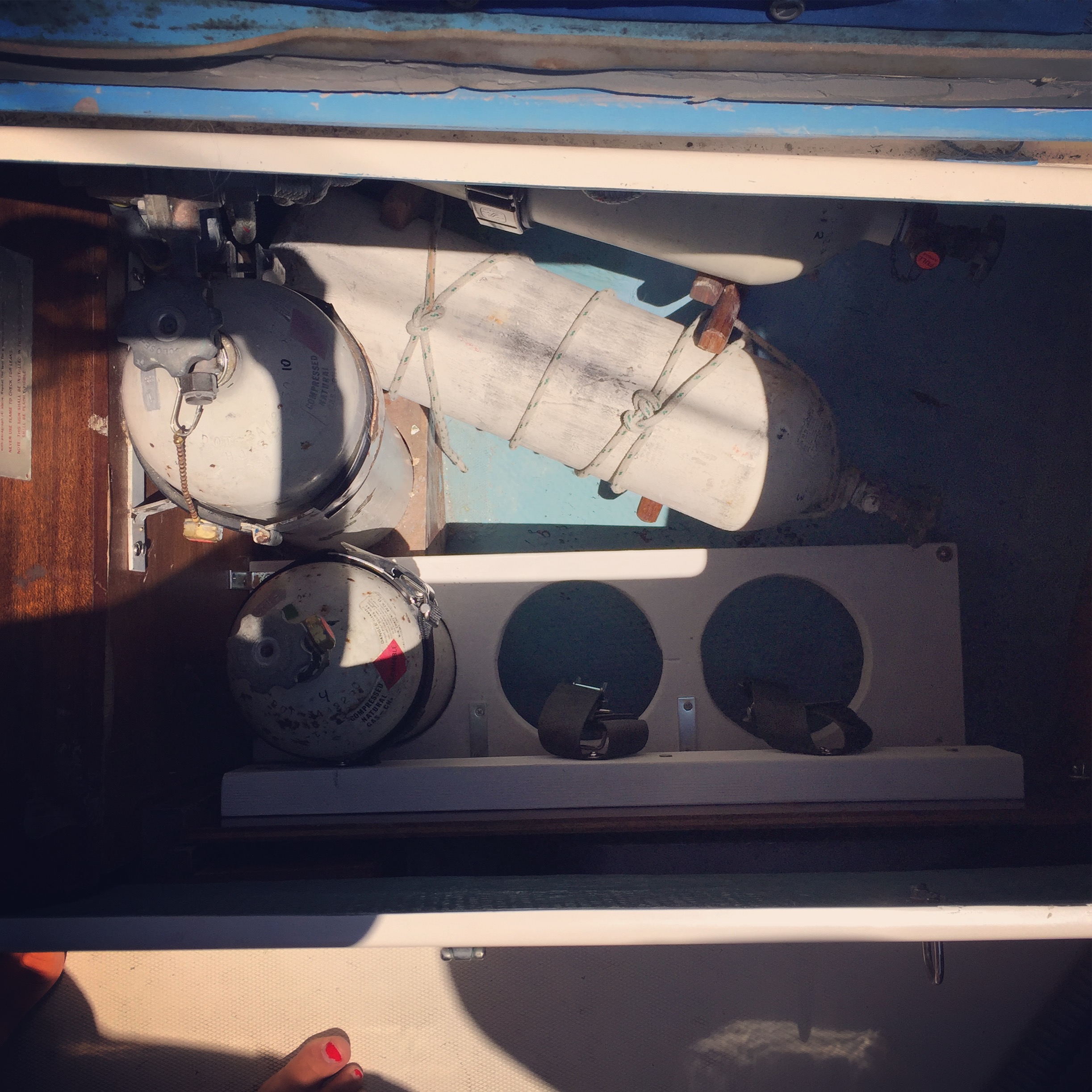ok, so that’s not an accurate description of the *entire* project, but it’s most of the work that’s remaining on “Project: Replace the Stove”.
Windfola was originally equipped with a CNG two-burner stove/oven. It worked great, and I loved that CNG was pretty safe. (It’s lighter than air, so you don’t have to worry about it sinking into the bilge and becoming an explosion hazard.) The other option that I knew of was propane, but it requires an isolated storage location that is fully enclosed with an overboard drain, so that any spilled propane can escape the boat. Due to the layout of Windfola’s storage lockers & lazarettes (deep storage compartments under the “benches” in the cockpit), it would have been a HUGE project to create an isolated location for propane, and impeded access to some portion of the “guts” of the boat - inboard engine, steering quadrant, etc.
I decided to stick with the original stove system.
I knew that CNG would be hard to come by in foreign ports, so before we set sail in summer ‘17 for Hawaii, I doubled the storage capacity for CNG tanks on Windfola. She then held six tanks; one tank lasted approximately seven weeks. I thought that would be enough to get us to New Zealand, Australia, or Hawaii, where I believed I could refill them.
Unfortunately, it turned out that I could not get CNG in all of Hawaii!
While I was there, I was kindly gifted a two-burner Origo alcohol stove, which I set on a countertop in the galley and used when I was at anchor or in harbors. This enabled me to conserve our CNG for upcoming long-distance passages, including the passage back from Hawaii to California in October 2018.
It also gave me a chance to try out an alcohol stove and determine if it was a viable alternative for us. After using it for nine months, I knew definitively that it was what I wanted. It’s easy to come by denatured alcohol, relatively safe, doesn’t require an isolated storage locker for fuel, and fairly efficient. I’ve read complaints that it smells and doesn’t burn quite as hot as other fuels, but these were never significant issues for me. I love to cook, and make some pretty elaborate dishes for visitors, so I can confirm that even for those of us who really cook, an alcohol stove works great. The fuel does make my eyes water slightly at first, and has a slight smell when burning. In my opinion, the scent is not gross like propane, and a simple vent of the companionway (doorway) hatch is more than enough to allow both the scent and fumes to dissipate.
So, while waiting for my long-stay French Polynesian visa to arrive, I took the opportunity last month to tear out the CNG stove/oven and remove the storage infrastructure for all six tanks. (These are all available for sale at Blue Pelican now… and still in great condition!)
For reference - the tanks are basically large SCUBA tanks, so this means I regained a great deal of space in a cockpit storage locker… enough to store my inflatable kayak AND spare jib (sail), which used to be stored in the v-berth (bedroom in the bow) when I was sailing.
I never baked on the boat (the oven was really inefficient), so losing the oven was a bonus because it meant a lot more storage space around the stove area. This is extremely useful space, because it is low in the boat, meaning it’s the perfect spot to store heavier stuff (like cans of fuel alcohol).
Blessed to have my own personal carpenter (no, not *that* guy), I now have the equivalent of a high-quality IKEA set to build a cupboard in the oven space. I also have the gimbal arms to mount to the sides of that area, allowing the new two-burner cooktop to remain level by swinging with the boat’s movements.
Yesterday, I worked on this until my drill battery died. Today, I’ll finish screwing it all into place!








